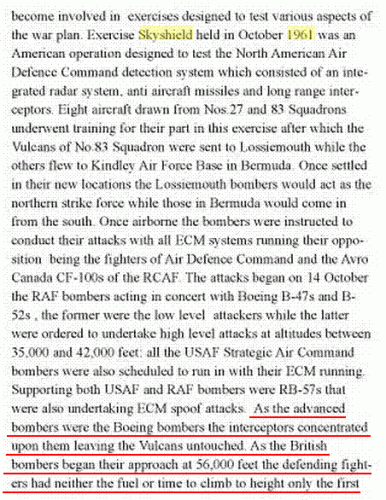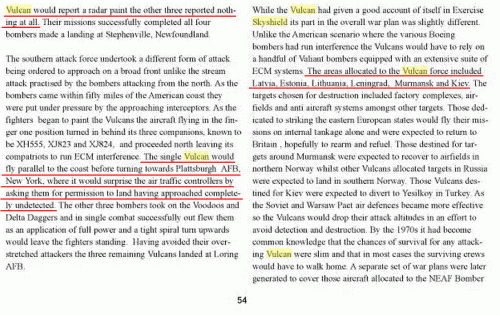A 1968 National Intelligence Estimate said the Soviets "has virtually no capability against low-altitude penetration below about 1,000 feet except in a few, limited areas. The Soviets recognize these shortcomings and are deploying new interceptors, surface-to-air missiles (SAMs), and radars in an effort to overcome them."
http://history.state.gov/historicaldocuments/frus1964-68v10/d221
221.
National Intelligence Estimate1
Washington,
October 31, 1968.
NIE 11–3–68
SOVIET STRATEGIC AIR AND MISSILE DEFENSES
The Problem
To estimate the strength and capabilities of Soviet strategic air and missile defense forces through mid-1970, and general trends in these forces through 1978.2
Conclusions
A. Throughout the postwar period the USSR has devoted a major effort to strategic defense. This effort can be attributed primarily to the size and diversity of US strategic attack forces, although for the future the Soviets must consider the threat posed by third countries, particularly China.
B. We believe that the competition for resources in the USSR is likely to intensify, not only between civilian and military programs, but also within the military establishment. These pressures may exercise a restraining influence on the strategic defense effort, but are unlikely to reduce it below present levels. The trend for the longer term will depend heavily upon Soviet decisions concerning antiballistic missile (ABM) deployment and the related question of strategic arms control.
C. The Soviets have built a formidable system of air defenses, deployed in depth, which would be very effective against subsonic and low-supersonic aircraft attempting to penetrate at medium and high altitudes. The system is less effective against higher performance aircraft and standoff weapons;
it has virtually no capability against low-altitude penetration below about 1,000 feet except in a few, limited areas. The Soviets recognize these shortcomings and are deploying new interceptors, surface-to-air missiles (SAMs), and radars in an effort to overcome them.
D. At present, the major effort is directed to counter the threat posed by high-performance aircraft and standoff weapons. Deployment of the SA–5 long-range SAM system is the largest single defensive weapon program now underway. This system represents a considerable improvement over older systems in terms of range, velocity, and firepower. It is being deployed as a barrier defense around the European USSR and for point defense of selected targets. We estimate that there are some 60 SA–5 complexes, and that nearly half are operational; we believe that some 100 complexes will be operational by 1973. The Soviets have also been testing an airborne warning and control system (AWACS) that will probably enter service soon. This system, deployed in coastal areas and used with long-range interceptors, could greatly extend the area in which incoming aircraft could be engaged.
E.
The Soviets are also attempting to strengthen their air defenses against low-altitude attack, but their efforts of the past year have resulted in minor improvements rather than in any fundamental solution to the problem. They have deployed all-weather interceptors with improved capabilities for low-altitude attack, and they will probably introduce more advanced SAMs and interceptors better suited for low-altitude defense.
The primary limitation on low-altitude defense, however, is surveillance and control. Deployment of new radars has improved tracking capabilities in limited areas down to altitudes of 500 feet and even below, but we expect little advance in ground-based continuous tracking capability at low altitudes during the period of this estimate.
(snip)
Discussion
I. Soviet Strategic Defense Policy
1. Soviet strategic defense forces have gone through several stages of development since World War II. Through the mid-1950's the Soviets attempted to counter the large US strategic bomber force in being with large numbers of air surveillance radars and interceptor aircraft, reinforced at Moscow with large numbers of surface-to-air missiles (SAMs). As the US force obtained higher performance intercontinental bombers, the Soviets in the late 1950's developed and deployed Mach 2 interceptors and extended SAM defenses throughout the country.
When the US, in the face of this extensive defense, began practicing low-altitude penetration tactics, the Soviets began in the early 1960's deploying the Firebar interceptor and the SA–3, both possessing better capabilities for low-altitude intercept than earlier systems. The US deployment of a standoff capability with air-to-surface missiles (ASMs), was followed by Soviet development and the current deployment of the Fiddler interceptor and the SA–5 system, which have greater ranges than earlier systems.
(snip)
4. The Soviets probably believe that the massive air defense forces they have built and are building will provide an effective counter to the medium and high-altitude bomber threat, although
they realize the problem of low-altitude defense is not yet satisfactorily solved. The most critical requirement of Soviet strategic defense, and the one most difficult to meet despite more than a decade of effort, however, is defense against ballistic missiles. The nature and extent of antiballistic missile (ABM) deployment is almost certainly one of the major questions of Soviet military policy.


